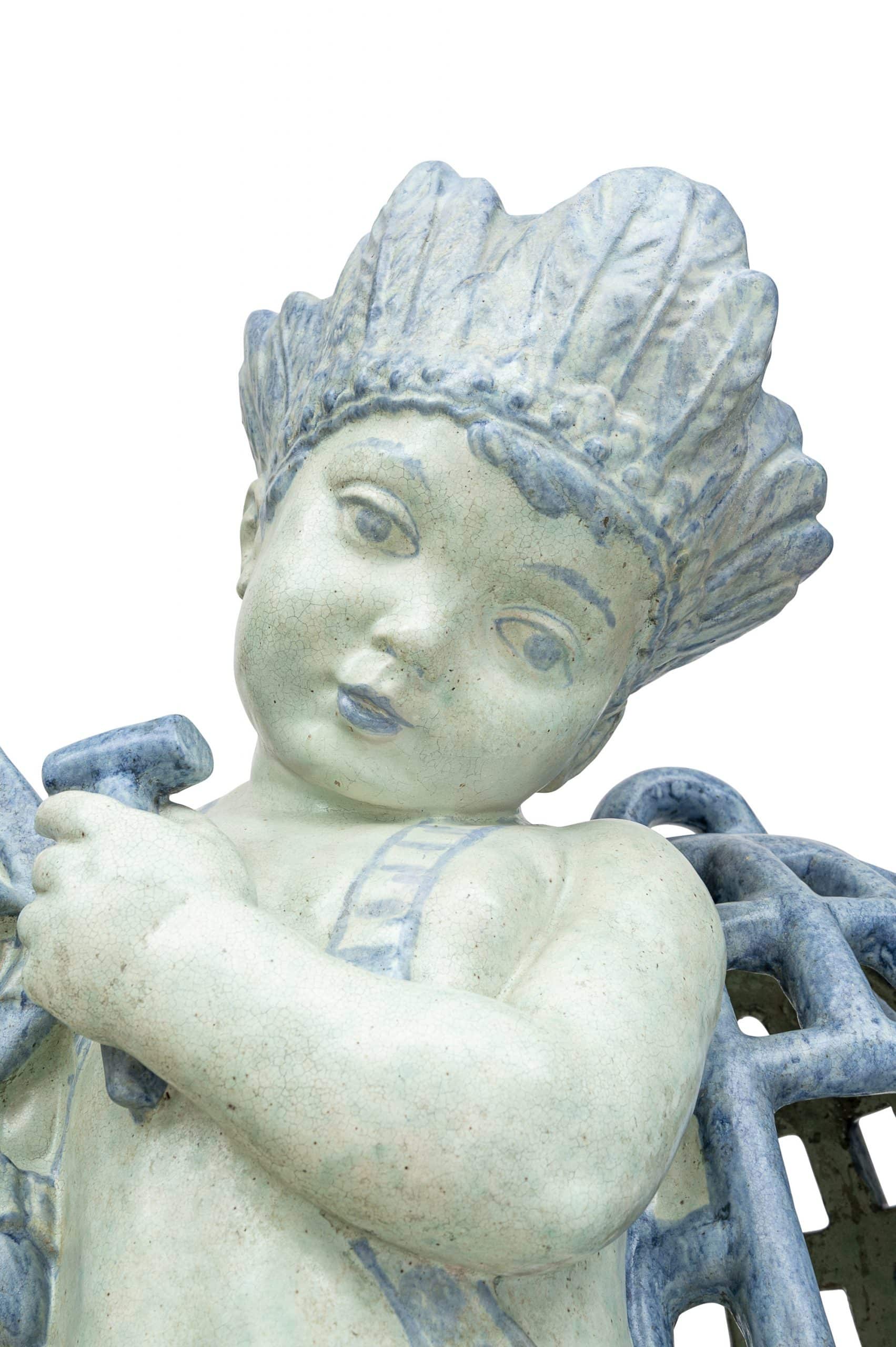Putto Papageno Michael Powolny Wienerberger ca. 1916/17
Large garden figure “Papageno”, Michael Powolny, Wienerberger AG, ca. 1916/17
Out of stock
Description
Concurrently with the sale of Wiener Keramik, founded by Bertold Löffler and Michael Powolny, Wienerberger AG decided to improve its reputation by producing its own high quality ceramics. To this end, it concluded a cooperation agreement with the artist Michael Powolny, in the course of which he was to supply Wienerberger AG with designs of representative artworks.
One of the most famous figures was the Papageno putto, an impressively large composition based on the figure of the bird catcher from Mozart’s Magic Flute. Standing on a round footplate, Papageno strikes his carillon to attract birds. Songbirds, parrots and various owls have already gathered around him, magically attracted by his playing and singing. On his back, the feather-adorned putto carries the opened birdcage. The execution of the complex scenery was demanding and testifies to the mastery of the craftsmen in charge.
The richly detailed depiction needed structural reinforcement to stand firm in the kiln and to withstand the weight of the putto. The lush vegetation behind the putto thus supports not only the graceful stance of the large figure but also the birdcage with its struts. The latter was particularly complex to execute. The structure helped the huge pottery survive the dangers of the firing process unscathed.
The Papageno Putto is among the most impressive and complex ceramics Powolny ever designed. Due to the challenging execution and associated costs, it was only produced a distinctly small number of times. Two other examples can be found in the Niederösterreichisches Landesmuseum and the Museum of Applied Arts Vienna.
Artist
Michael Powolny (Judenburg 1871 – 1954 Vienna) is one of the most famous ceramic artists of the Viennese Jugendstil. After his apprenticeship as a potter, he studied at the Vienna School of Applied Arts, where he also taught later on. He soon became a part of the inner circle of the Viennese Secessionists and was involved in the designing of important “Gesamtkunstwerke” (total works of art) in the spirit of the Wiener Werkstätte; for example, the legendary Cabaret Fledermaus in Vienna or the Palais Stoclet in Brussels. In 1905, together with Berthold Löffler, he founded the "Wiener Keramik", whose products were distributed by the Wiener Werkstätte. In 1912, the “Wiener Keramik” merged into the "Vereinigte Wiener und Gmundner Keramik", which continued to produce designs by Powolny and Löffler. Many of Powolny's large-format designs were also produced by the Wienerberger company from around 1914 onwards (sculptures, tiled stoves, architectural elements). In the decorative arts of Jugendstil, the name Powolny is associated in particular with the Secessionist figurines (Schöne Helene) and the popular seasonal putti. With his childlike, cheerful putti, Powolny had a decisive influence on the aesthetics of decorative sculptures of Viennese Jugendstil. Powolny also designed large figural ceramics, namely for the Stoclet Palace or the Dianabad. As a designer, Powolny also created glass objects, for example for the glassworks Johann Loetz Witwe or the traditional Viennese company J. & L. Lobmeyr. Today, Powolny’s imaginative and decorative sculptures as well as glass objects can be found in Jugendstil collections of important museums of applied arts, such as the MAK in Vienna.
Inquiry
By submitting the inquiry form, you agree to the use of your data for this inquiry. Privacy Policy





















